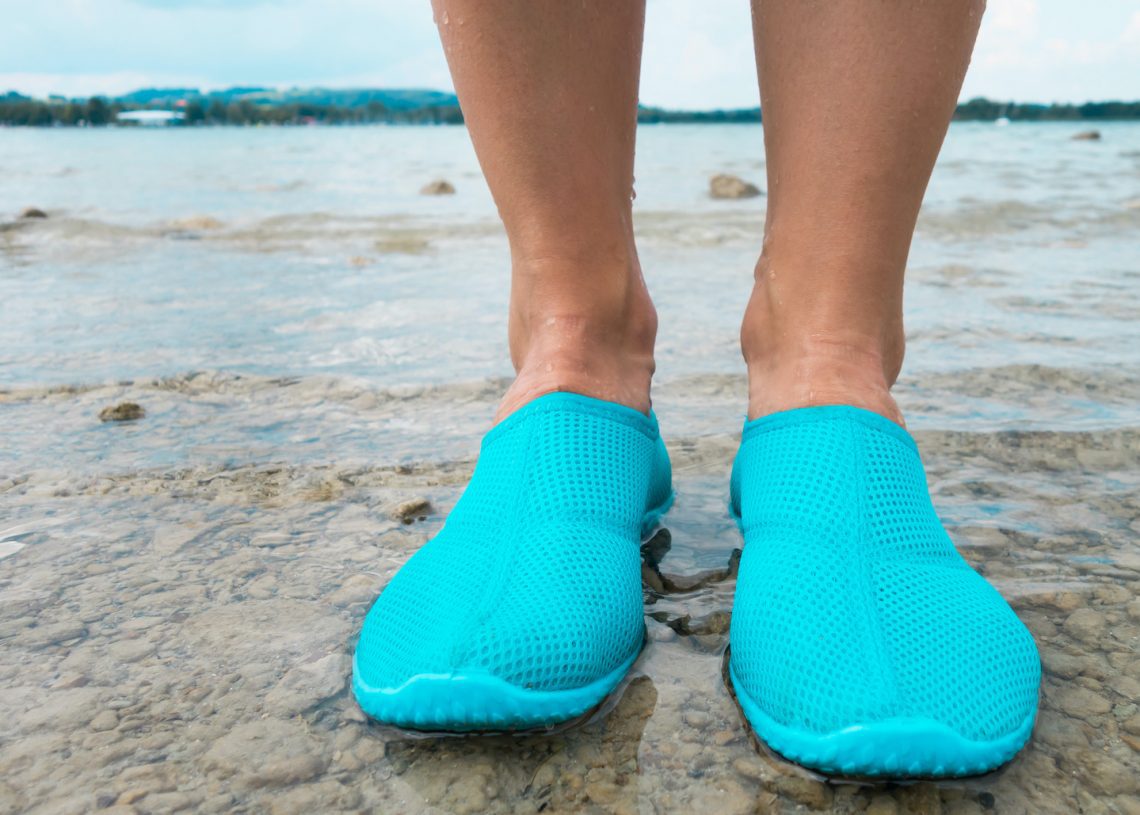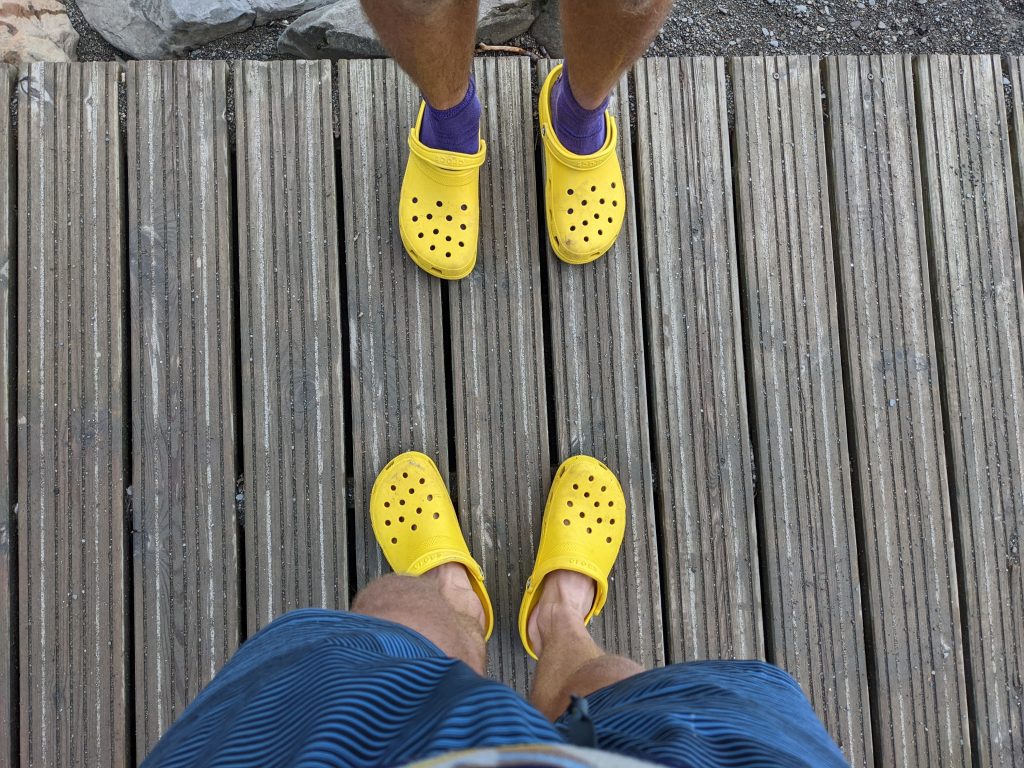
Footwear for outdoor swimming
It’s a good idea to give our feet some protection when outdoor swimming. Here we share some footwear options
With the exception of those verruca socks we had to wear back in the day, most people swim barefoot in pools. Having anything on your feet interferes with your swimming and feels odd, so why would you do it in open water?
One good reason is protection. When we swim outdoors, we sometimes have to walk over rough ground to reach the water. Wading into the water, we might step on sharp stones or broken glass.
Pebbly beaches can be a nightmare for those of us with soft feet, and sandy beaches may hide weever fish that can deliver a nasty sting. Second, in cooler water, having something on your feet can stave off painful or numb toes. Let’s look at some footwear options.
Flip flops, sliders or crocs
These are all useful if you need foot protection while getting to the water but not while you’re in the water. The main question is what do you do with them while swimming?
If you’re entering and exiting the water in the same place, and the water level won’t change, just leave them at a convenient spot. Otherwise, put them into a tow bag, or attach them to the strap of your tow float. I have even swum with flip flops tucked inside the legs of my jammers.

Water shoes
Usually water shoes have a tough plastic sole and a mesh upper. They’re great for scrambling over rocks and stay on your feet while swimming. However, they don’t provide much insulation from the cold and can feel heavy while swimming. Best for days on the beach and short swims.
Fins
You might want to consider wearing fins if you regularly swim with people who are faster than you or if you want to pootle around gently while looking at the underwater scenery.
As you can’t easily walk in fins, and prolonged use can cause blisters, you might want to combine them with neoprene socks so you have something on your feet while walking to
and from the water.
Running or trail shoes
In a swimrun, you swim in whatever shoes you’re running in. Many swimrunners use a pull buoy to compensate for the extra drag caused by swimming in running shoes but it’s not necessary.
While running shoes wouldn’t normally be a first choice for wild swimmers, if you’ve got
nothing else they are better than nothing for foot protection.
Read our guide to water shoes.
To see all the online content from the April 2023 issue of Outdoor Swimmer, visit the 'Underwater' page.







